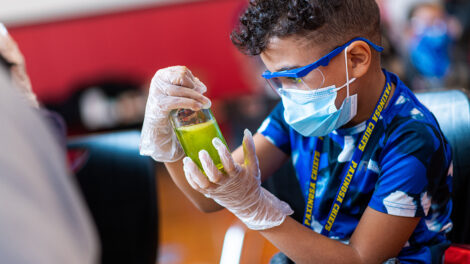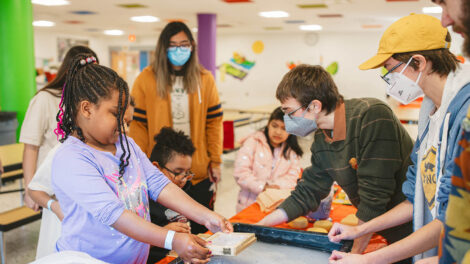Connected Classrooms helps elementary students answer life’s big questions
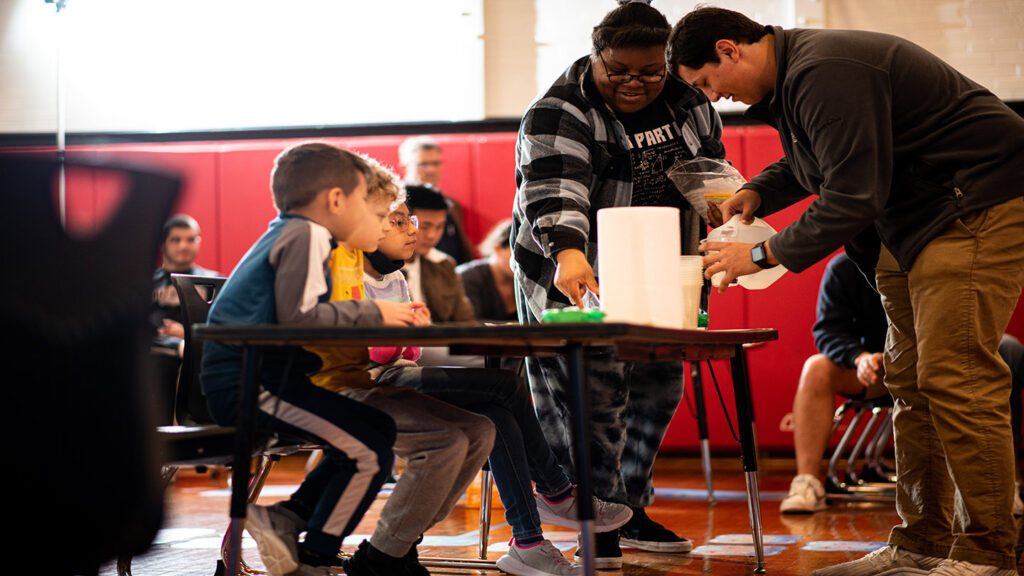
Second-grade students at Paxinosa get hands-on with a water-related activity.
By Shannon Sigafoos
What kind of fossils can you find in the sea?
How much water does the average person use on a daily basis?
How do different parts of the brain control our actions?
How do you build a house?
How does math help us understand the world?
These questions (and more) were answered in classrooms at Paxinosa and Cheston Elementary schools during the spring semester as part of Landis Center for Community Engagement’s ongoing Connected Classrooms initiative. And for the first time since 2019, some of those young students were able to visit College Hill and spend extra time with their “Lafayette teachers.”
While the program has worked primarily with third through fifth grade classes in the past, this semester offered the opportunity for students in first and second grades to take part in the hands-on learning that is often the highlight of the program. From Prof. Christa Kelleher’s Civil and Environmental Engineering students teaching kids how Play-Doh-made buildings can interrupt drainage in the watershed, to Prof. David Sunderlin’s students showing how to dig for fossils in the sand, Connected Classrooms is more than just a lesson—it’s an opportunity for Lafayette students to make a lasting impression on young minds who will carry these lessons with them.
“It was helpful to communicate things that I have learned to an audience that is less familiar with the language. I love working with kids, and it was reassuring to see that I could teach people who are younger and less educated on the information I was sharing,” said neuroscience major and EXCEL Scholar Kiera Caldwell ’22, who was part of Prof. Henry Hallock’s class teaching at Paxinosa. “It was also rewarding to feel connected to the community in which Lafayette resides. The campus can tend to feel a bit like a bubble, so it was refreshing to interact with people outside of other Lafayette students or faculty. Hopefully more programs like this can exist so local children can see what is possible for them, and so that Lafayette students can practice their knowledge in a fun and unique way.”
“Initially it seemed that the students were a little intimidated by being in a college setting, but once we started talking to them, I was surprised by their knowledge of world events. Their enthusiasm only grew as we went through the presentation. They were able to come up with multiple examples of everything that we asked. All of the students got a chance to share their ideas, which is something I appreciated,” Brady Valle ’25 said of the elementary students visiting Lafayette. “Being a teacher for the day was a lot of fun, and it gave me a new respect for teachers around the world. Prior to this experience, I never realized how much time goes into creating a lesson plan.”
Six different classes participated in the spring 2022 Connected Classrooms program. Here is a rundown of their lessons, and takeaways from Lafayette students, professors, and Easton School District faculty:
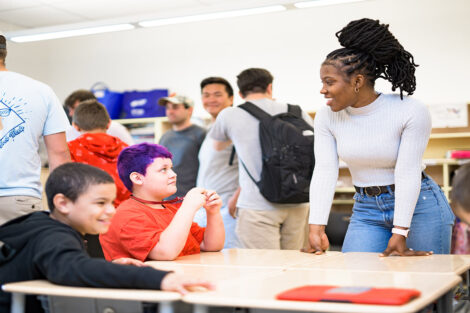
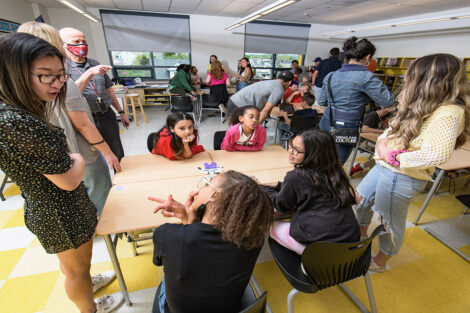
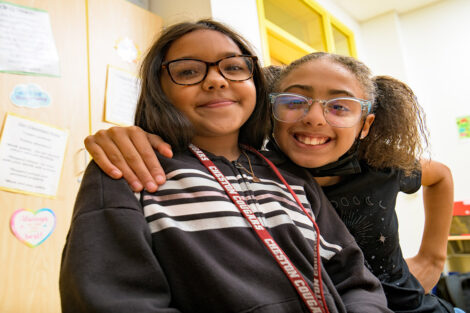
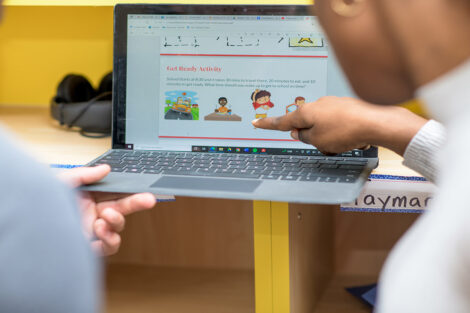
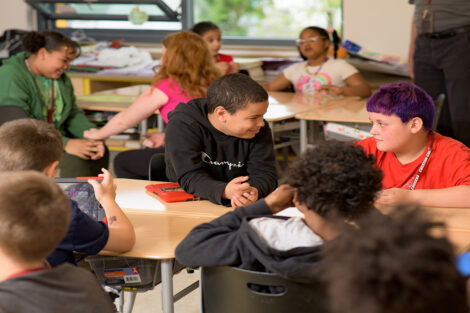
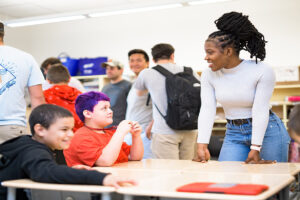

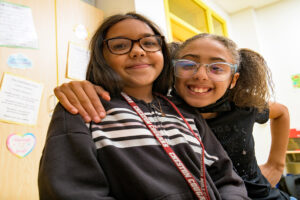
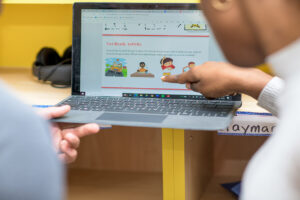
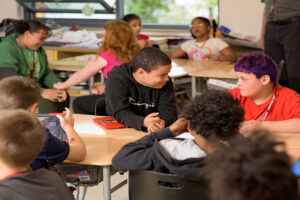
Topic(s): The Brain: How does it perceive music?; Exercise and the brain; Optical illusions; Pet therapy for anxiety
Lafayette instructor: Henry Hallock, assistant professor of neuroscience
Visiting the class of: Lorenzo Molina, Paxinosa Elementary School, fourth grade
Why are these lessons important? “Being a professional scientist is just as much (if not more) about doing the actual science as it is about communicating what you do to laypeople. It’s really critical that our neuroscience students learn how to talk about the stuff they do with people from all walks of life, and of all ages,” said Hallock. “As a professor, I really appreciated the opportunity to do something that tangibly affected people in our community. Oftentimes, the link between the skills and ideas that we teach in the classroom and their impact in the real world is abstract. Working with the Landis Center allowed me and my students to do something immediately impactful.”
Topic: Quantitative Literacy: How we use mathematical thinking to understand the world, make decisions, and communicate with others
Lafayette instructor: Robert Root, professor of math
Visiting the class of: Rebecca Haller, Cheston Elementary School, fifth grade
Why are these lessons important? Math is not a discipline that was traditionally part of the Connected Classrooms curriculum in years past; Root’s students actually did both virtual and in-person sessions with Haller’s class, with the program serving as a means to foster a positive mathematical experience and build understanding of numeracy through explorations based on children’s’ interests and integrated with other subjects.
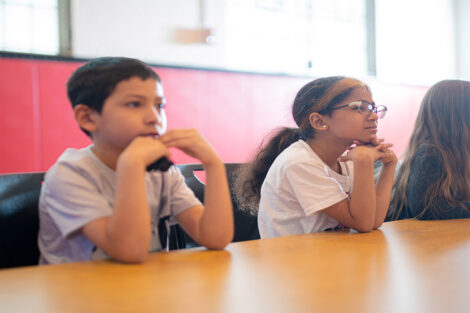
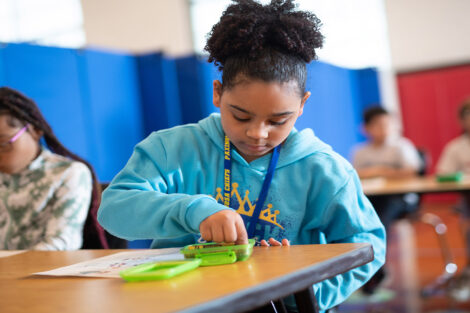
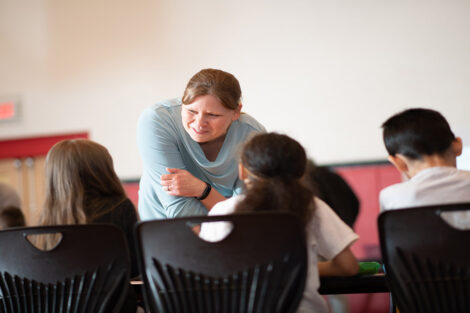
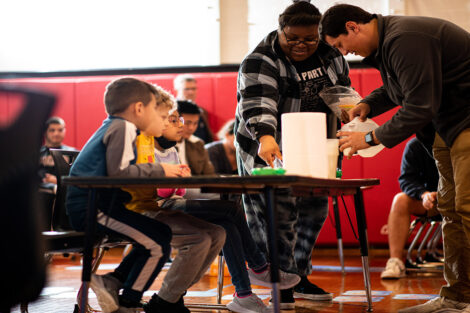

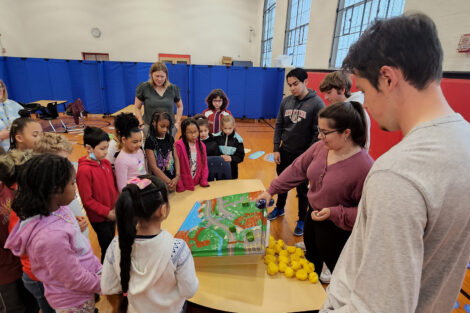
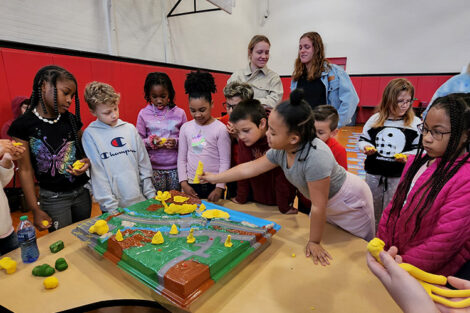


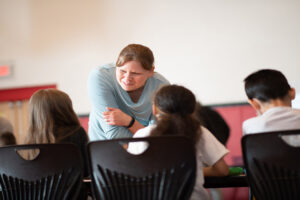
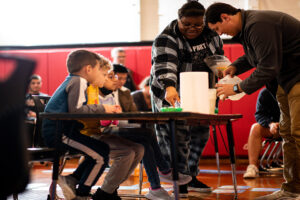

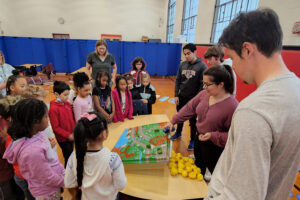
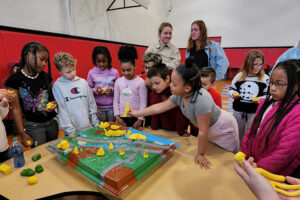
Topic: Humans and the Water Cycle
Lafayette instructor: Christa Kelleher, assistant professor of civil and environmental engineering
Visiting the class of: Michelle Gifford, Paxinosa Elementary School, second grade
Why are these lessons important? “We used a model watershed and had the kids make things out of Play-Doh, such as buildings, people, and cars, to put in the watershed. We knew that the kids would love playing with Play-Doh, and we thought that it would be fun and interactive,” said Christina Ruvo ’23. “When we were doing the activity in the classroom, the kids were very attentive and creative. They were able to understand how a watershed works, they answered our questions about watersheds, and they even asked us some questions. The Play-Doh part was very fun, because they came up with so many creative things to make, like flowers and fish. The program helped me think outside the box, and I had a lot of fun with the kids.”
Topic: How American houses are built
Lafayette instructor: Nara Almeida, visiting assistant professor of civil and environmental engineering
Visiting the class of: Paul Cinoa, Cheston Elementary School, fourth grade
Why are these lessons important? “I think the best part about the program is that it’s just a great opportunity for my students to interact with college students. They’re doing the educational components, but I also love watching my kids interact with them—hearing where they’re from, talking with them about what they like—it’s important for the students to be part of that,” said Cinoa. “Particularly the students here in southside Easton. When I talk to my students, some of them have never been to Lafayette even though a lot of kids grew up here. The interaction is invaluable.”
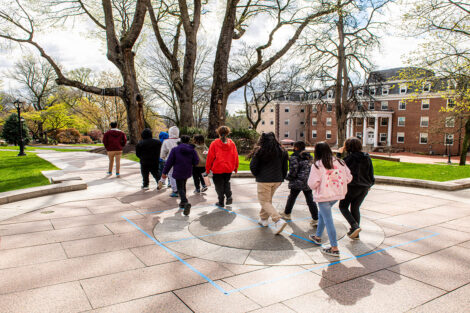
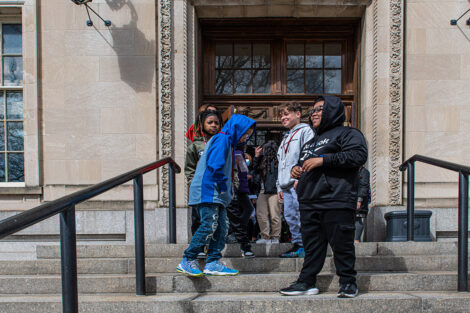

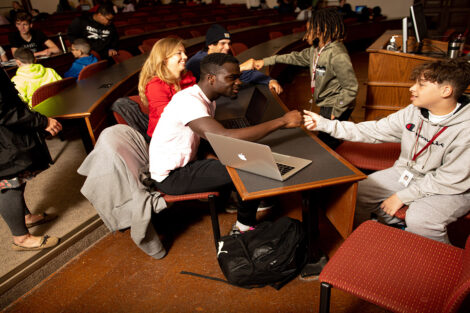
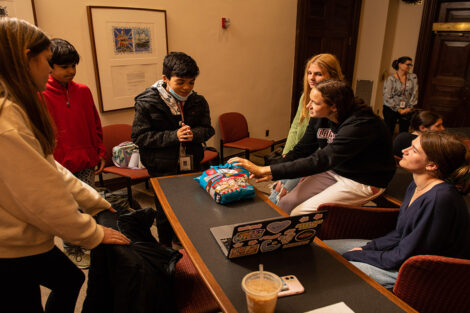
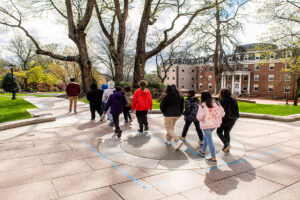

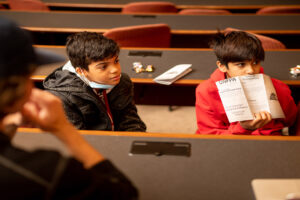
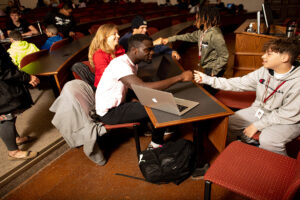
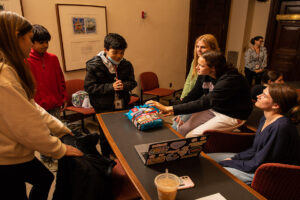
Topic: There’s an Org for That: Small group discussions on select global issues and problem-solving efforts by various international organizations
Lafayette instructor: Seo Hyun Park, associate professor of government and law
Visiting the class of: Anniely Gutierrez, Cheston Elementary School, fifth grade
Why are these lessons important? “A lot of the students were really engaged and interested in what we were presenting. They asked questions, and we often asked them to explain things in their own words. It felt nice to be a teacher for the day. Seeing the kids’ faces brighten up when they figured things out for themselves, and when they started to understand what we were saying to them, felt incredible,” said Makayla Andrews ’24. “I think Connected Classrooms is very important for Lafayette because it gives younger kids insight on what college students are learning, and it also gives college students a chance to experience their childhood again and highlight some of the reasons why we are in school today. It was a pleasure working with the fifth grade students, and an overall great experience.”
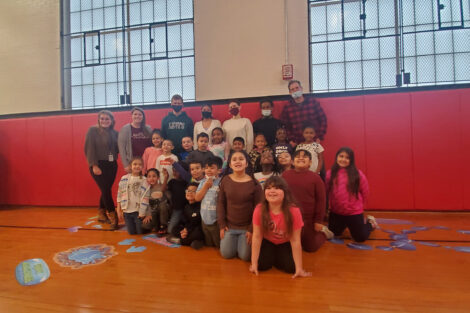
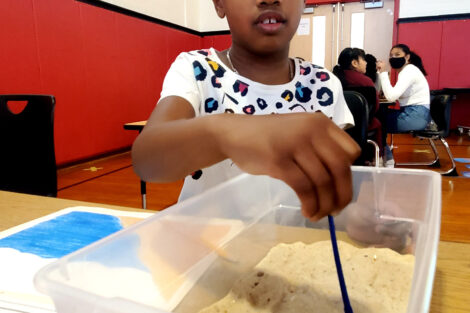
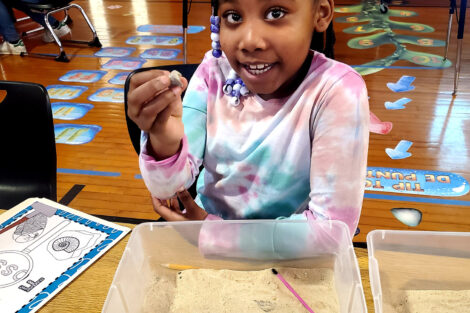
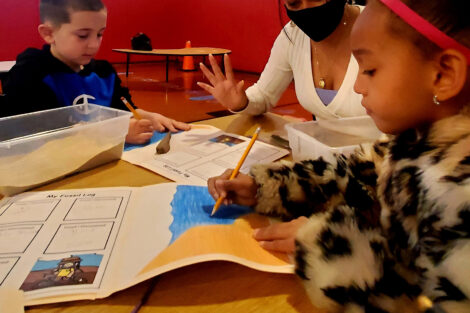

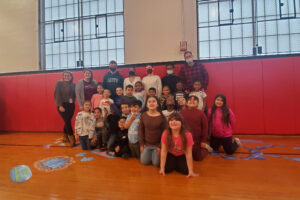
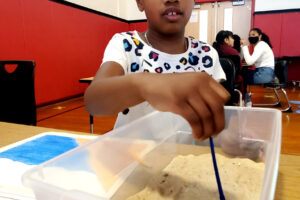
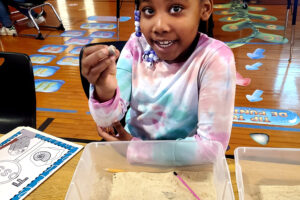
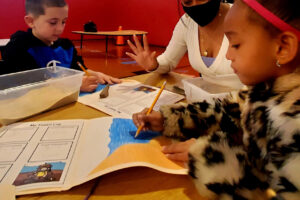
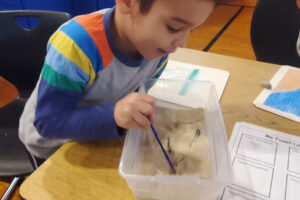
Topic: Paleontology and fossils
Lafayette instructor: David Sunderlin, associate professor of geology and department head
Visiting the class of: Brooke Heitzman, Paxinosa Elementary School, first grade
Why are these lessons important? “I love kids, so the joy I got from being with them and seeing their faces full of amusement when they found out that one of the fossils was whalebone was more than anything I could ask for. I solely did it because I believed it is crucial to have students representing those who may not be able to find geology students who look like them,” said Matwos Tadesse ’24. “The rocks and minerals were fascinating to the students. They gave us hugs, and I even made a couple of friends. They were very interested in the topic, and the fact that they were able to take the fossils back home made them very excited.”
Helping our Neighbors
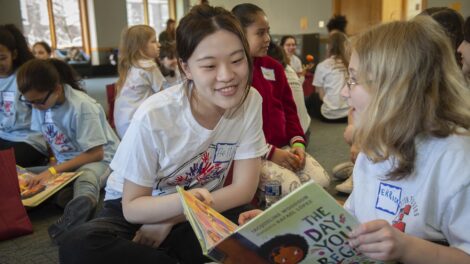
Landis Center for Community Engagement
The Landis Center for Community Engagement serves as the primary resource for community-based learning and research activities at Lafayette College by facilitating partnerships between the campus and Easton communities.
